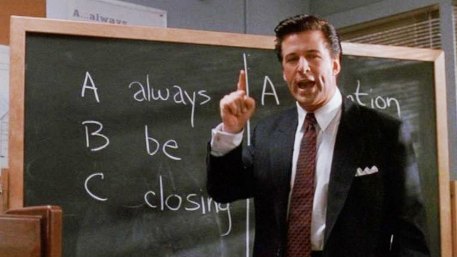 magnetiCClassroom.com is back from summer vacation with a top-ten list to get your own classes off to a good start.
magnetiCClassroom.com is back from summer vacation with a top-ten list to get your own classes off to a good start.
An effective and positive beginning sets you and your students up for success in three ways.
- Logistic
Your students don’t know your system, don’t know your rules, and don’t necessarily know how to use the resources you’re going to make available. Meanwhile, they’re not signed up for the tools you want them to sign up for, you don’t have some critical contact information you’ll later need, and, well, your classroom is not “systems-go.”
2. Thematic
Students might know the name of the class, but they don’t know why they should be psyched for the class. Or what the class has to do with their lives. And if you don’t know the answer to that, well, you won’t be able to transmit it. That’s a missed opportunity to earn “buy-in.”
3. Social/Emotional
If you want the class to be somewhere students are happy to be, you’ll need to invest in the class being somewhere they feel seen, heard, and felt. This begins right at the beginning.
Here are 10 things to take care of in the first two weeks, addressing these 3 areas. Some are easy adaptations, and some you should flag for follow-up if the “ship has launched,” so to speak. There’s always the quarter break.
 Day 1: Share the theme, get students talking, and get them registered for your preferred modes of communication
Day 1: Share the theme, get students talking, and get them registered for your preferred modes of communication
While many teachers begin the year with “reading over the syllabus,” I believe the students’ retention of this information is low, and none of our three goals above are achieved. Plus: BORING. Instead, try this:
- Open with one of your essential questions: something which any student is both qualified to speak about, and also inherently interested in. My two high-school classes begin with, “Is it a safe world or an unsafe world?” and “What makes life better.” I don’t talk for the first 10 minutes of the first day of class. For more about essential questions, check out this site.
 Put together a Google slide-presentation or Prezi that you can reuse and improve from year to year, which includes interesting and amusing video clips, some topics for discussion, and some interactive fun-stuff. I’ve used this Prezi for a few years, and it keeps me on track, includes fun activities, and sets up the theme for a literature course I teach, where I’ve identified “relationships” as the main theme.
Put together a Google slide-presentation or Prezi that you can reuse and improve from year to year, which includes interesting and amusing video clips, some topics for discussion, and some interactive fun-stuff. I’ve used this Prezi for a few years, and it keeps me on track, includes fun activities, and sets up the theme for a literature course I teach, where I’ve identified “relationships” as the main theme.- At the end of the slideshow, give them homework: to sign up for Remind, to read your class norms and policies, and bring any clarification questions to the next class.
 Day 2: Get the students familiarized with your class norms, co-create a covenant, and begin reinforcing your values.
Day 2: Get the students familiarized with your class norms, co-create a covenant, and begin reinforcing your values.
4. Allow students to ask questions about your class norms and policies. Clarify, and as homework, have them review the norms and policies to study for a quiz. Let them know, in advance, that any questions they get wrong they can recover points on by coming to your office with the correct answers located on the document.
Hint: consider this being the introduction to your year-long policy: quizzes can be corrected for credit!
5. Have an open-ended conversation about class values: student-to-student ethic, productivity, and responsible use of technology.
Hint: have students record their ideas on a group Google Doc Covenant like this one and have them sign it.
6. Have the students create homework passes, which look a lot like popsicle sticks with the students’ names. Talk with students about what your goals for homework are, and how you also understand that sometimes life happens – and homework doesn’t get done. That’s what the passes are for. Students can be honest about not having homework done – and the reason why won’t even matter. Twice per quarter.
This reinforces that the rest of the time, it really needs to be done.
 7. That evening, add any behaviors the class wants to reinforce to Class Dojo, an excellent tool for increasing positive conduct in the classroom.
7. That evening, add any behaviors the class wants to reinforce to Class Dojo, an excellent tool for increasing positive conduct in the classroom.
Day 3: Jump into your first lesson with something interactive
8. Use Socrative or Poll Everywhere to begin class with a survey, predicting the class results, and discussing the findings. Be sure the topic is connected to the enduring understandings of the unit.
9. Be sure that you plan at least two separate sessions, in the first two weeks, where students tell stories from their lives on a thematically relevant prompt. Students who feel like people are “getting them” are more resilient to critique – both from their teacher and from their peers.
10. Have a meeting with every student who misses / forgets any low-stakes assignment (or shows signs of acting out), early on. At the meeting, give the clear message that you are never here to judge, you are only here to support. Express how eager you are to clarify and help. Be positive and enthusiastic.
Here’s wishing you a great start to your semester!
I’d love to welcome my readers to suggest their own first-two-weeks checklist items below!
 This capacity allows individuals not only to hear their origins retold, but also it allows plans to be made, jokes to be told, instructions to be given, and ceremonies to be performed. Just think about it: people grow quiet, maintain eye contact, and give their attention (or at least appear to) to a performer, simply because “that’s what’s happening now.” It’s incredible that it happens at all. On the other hand, at a certain level, the “audience trance” has powered civilization since its earliest days.
This capacity allows individuals not only to hear their origins retold, but also it allows plans to be made, jokes to be told, instructions to be given, and ceremonies to be performed. Just think about it: people grow quiet, maintain eye contact, and give their attention (or at least appear to) to a performer, simply because “that’s what’s happening now.” It’s incredible that it happens at all. On the other hand, at a certain level, the “audience trance” has powered civilization since its earliest days.
 Extra credit is a thing of the past.
Extra credit is a thing of the past. Students who wish to recover points make an appointment do a series of exercises (or answer questions, or read models of excellence) to get their minds in gear. Then we go over the principles they need to express on the assessment.
Students who wish to recover points make an appointment do a series of exercises (or answer questions, or read models of excellence) to get their minds in gear. Then we go over the principles they need to express on the assessment. Comedy.
Comedy.






 You’ve got to admire successful salespeople. You don’t need to
You’ve got to admire successful salespeople. You don’t need to  As a teacher, I’m not so much interested in closing (not in this post, anyway). But I am interested in mindsets that allow. me to reach my goals. Given that there never seems to be enough time to do
As a teacher, I’m not so much interested in closing (not in this post, anyway). But I am interested in mindsets that allow. me to reach my goals. Given that there never seems to be enough time to do  Think about this before you answer.
Think about this before you answer. Sometimes, students ask you for letters of recommendation. This is
Sometimes, students ask you for letters of recommendation. This is  The Solution:
The Solution:  And so on. With this information, I can craft a letter which gives great insight into who the student is – in the same way that a journalist might interview a subject in order to write a thoughtful, positive, editorial piece. And since I don’t need to scrape my memories for something worth saying, the writing process is quicker and more efficient, while the content is deeper. WIN, WIN!
And so on. With this information, I can craft a letter which gives great insight into who the student is – in the same way that a journalist might interview a subject in order to write a thoughtful, positive, editorial piece. And since I don’t need to scrape my memories for something worth saying, the writing process is quicker and more efficient, while the content is deeper. WIN, WIN!

 Many students can self-correct. That is to say, they receive a bad grade on a test and know they need to “study harder.” Let’s put aside for a minute the fact that many students have no idea how to study. Let’s focus on the fact that somehow, these students seem to improve.
Many students can self-correct. That is to say, they receive a bad grade on a test and know they need to “study harder.” Let’s put aside for a minute the fact that many students have no idea how to study. Let’s focus on the fact that somehow, these students seem to improve.

 Some words are used, almost exclusively by certain demographics, and the words, as used, don’t mean what they’re supposed to mean.
Some words are used, almost exclusively by certain demographics, and the words, as used, don’t mean what they’re supposed to mean. Analysis
Analysis
 Q: How do you get struggling students to alert you to problems with major assignments so they will be prepared for time-sensitive class experiences?
Q: How do you get struggling students to alert you to problems with major assignments so they will be prepared for time-sensitive class experiences?


